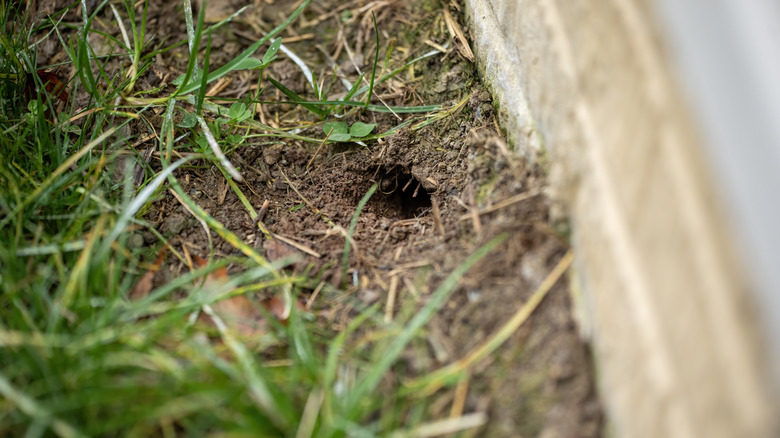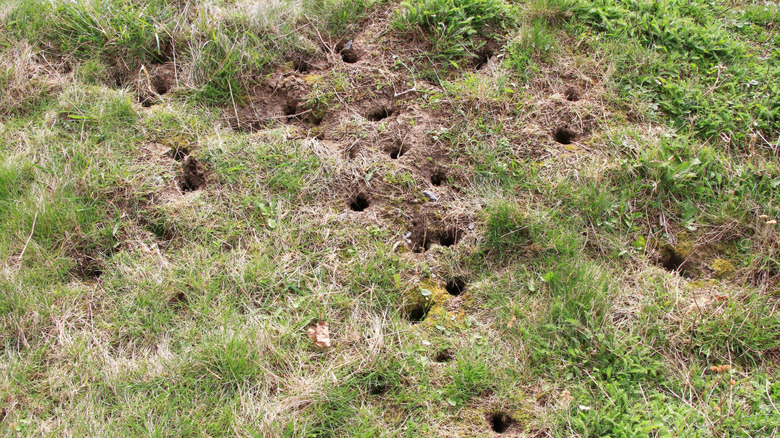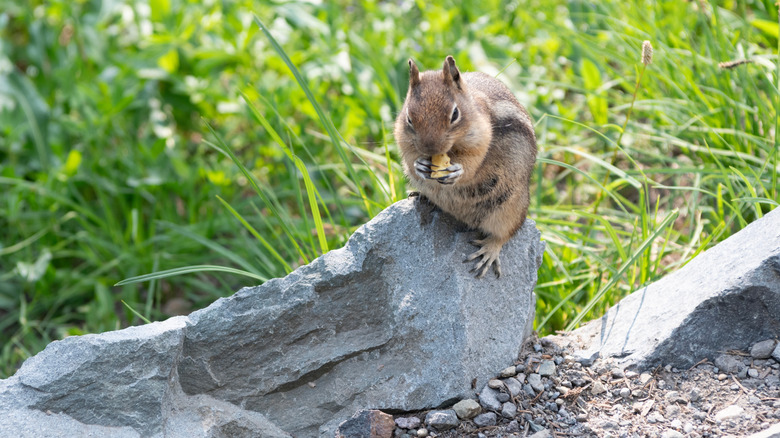The Difference Between Lawn Damage From A Squirrel Or Chipmunk (And Which Is Worse)
It can be hard to tell which pest is creating the holes in your yard when you start to find mysterious craters scattered around the lawn. Two of the most common suspects are squirrels and chipmunks, and though they are both known for their digging habits, the type of damage they cause on your lawn can differ quite a bit. Squirrels typically dig short, shallow holes, usually only a couple of inches deep. They are trying to find hidden food like nuts or flower bulbs. The squirrel holes tend to be very surface-level and random, which is unsightly but is usually temporary and an easy fix with a little bit of spare soil.
Chipmunks, however, create a much more substantial issue. Their holes may look small on the surface and similar to a squirrel's, but these can end up being just an entry point to deeper underground burrows. These networks can ruin your soil structure and lead to much larger problems over time. While neither animal is particularly as aggressive towards lawns as a mole or vole may be, chipmunks can be more destructive in the long run due to the scale of their tunneling systems. If you're seeing persistent holes with no mounds around it, or signs of a deeper depth, the damage may go much further than you expect.
Identifying lawn damage from squirrels vs. chipmunks
To identify which animal is responsible for your lawn damage, you'll want to start by checking out the holes. Squirrels usually create rough, shallow holes, only a few inches wide, and without any surrounding mounds of soil. They may appear more often around fall when squirrels are preparing for winter, but they can happen any time of year. These holes don't typically connect to any tunnels and are often abandoned once the squirrel has retrieved what it was looking for.
On the other end of the spectrum, chipmunk burrows often appear clean around the edges. This is because chipmunks will carry away dirt from their entrances. These holes are often just entry points into a much larger tunnel system that can run under patios, sidewalks, and even house foundations. If you start to notice a pattern of holes around shrubs or walls, you're likely dealing with chipmunks. Try filling the holes with mainly gravel and a little soil and stamping them down firmly. If that doesn't work, you may need to look into installing underground mesh barriers, which help deter future diggers.
Ways to keep chipmunks and squirrels from tearing up your lawn
Once you've solved the mystery of who is digging up your lawn, it's time to take action. One of the most effective ways to get rid of squirrels is to simply remove possible food supplies. If you have bird feeders, consider switching to squirrel-proof ones and try to keep birdseed off of the lawn. Regularly cleaning up fruits or acorns from trees can also cut down on squirrel activity. Since squirrels generally stay surface level, you can always try to get motion-activated sprinklers installed to help scare them away.
Chipmunks are a bit harder to push out of your lawn though, and if they've already settled in, it may be difficult to kick them out. However, there are ways to keep chipmunks out of your garden. Trimming back vegetation and sealing away potential hiding spots could make your lawn less inviting to them. Physical barriers like buried hardware cloth around gardens can also block access. There are commercial products that can help but success may vary. If it's becoming a big problem though, you may need to contact a wildlife professional to help relocate the animals away from your lawn.


